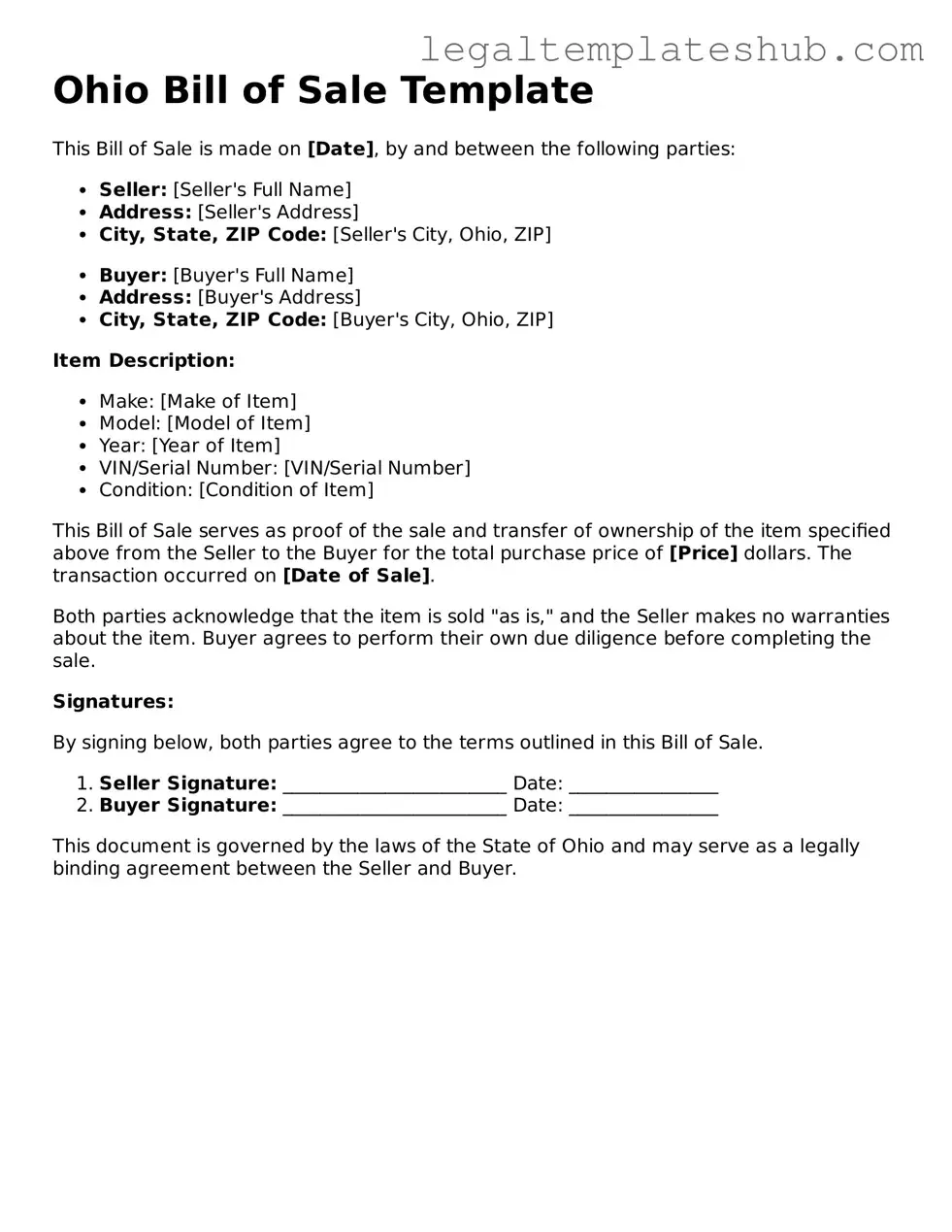Instructions on Filling in Ohio Bill of Sale
Once you have your Ohio Bill of Sale form ready, it’s time to fill it out accurately. This document is essential for recording the transfer of ownership for various items, such as vehicles or personal property. Follow these steps carefully to ensure that all necessary information is included and correctly stated.
- Obtain the Form: Download or print the Ohio Bill of Sale form from a reliable source.
- Identify the Seller: Write the full name and address of the seller. Ensure that this information is accurate.
- Identify the Buyer: Next, enter the full name and address of the buyer. Double-check for any spelling errors.
- Describe the Item: Provide a detailed description of the item being sold. Include make, model, year, and any identifying numbers, such as a Vehicle Identification Number (VIN) for vehicles.
- State the Sale Price: Clearly indicate the sale price of the item. Be specific about the amount in both numbers and words to avoid any confusion.
- Include Date of Sale: Write the date on which the sale is taking place. This is important for record-keeping.
- Signatures: Both the seller and buyer must sign the form. Include printed names below the signatures for clarity.
- Notarization (if required): In some cases, you may need to have the document notarized. Check local requirements to see if this step is necessary.
After completing the form, ensure that both parties retain a copy for their records. This will serve as proof of the transaction and can be important for future reference.
